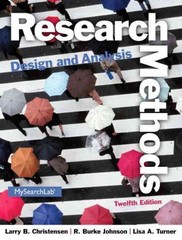Question
This month, Donna is working part-time and earning $700. Next month, she will be on break from school and work more hours, and thus earn
This month, Donna is working part-time and earning $700. Next month, she will be on break from school and work more hours, and thus earn $2000. Her schedule is already set now she is just trying to decide how much to consume each month. We will assume that prices don't change, so we can't ignore them (p1=p2=1). We will also assume that the interest rate is the same for borrowers and savers.
Donna's utility over consumption during this month (c1) and next month (c2) is:
U = min(1.2c1 ,c2)
a) Draw Donna's budget constraint, assuming initially that she can borrow and save at 0% interest rate. Make sure you label the axes and mark any relevant coordinates. Solve for Donna's optional consumption basket and show it in the graph.
a) Draw Donna's budget constraint, assuming initially that she can borrow and save at 0% interest rate. Make sure u label axes and mark any relevant coordinates. Solve for Donna's optimal consumption basket and show it in the graph. Does she borrow or save in period 1?
b) Now suppose that Donna can only borrow at interest rate of 25%. But she will also receive 25% interest on any money she saves. Draw this budget constraint in a new graph. How much will Donna consume now in each period?
c) Was Donna helped or hurt by the interest rate increase from (a) to (b)? provide the gerenal definition of compensating variation and apply it to this case to calculate Donna's compensating variation over the interest rate increase from 0% to 25%.
Step by Step Solution
There are 3 Steps involved in it
Step: 1

Get Instant Access to Expert-Tailored Solutions
See step-by-step solutions with expert insights and AI powered tools for academic success
Step: 2

Step: 3

Ace Your Homework with AI
Get the answers you need in no time with our AI-driven, step-by-step assistance
Get Started


